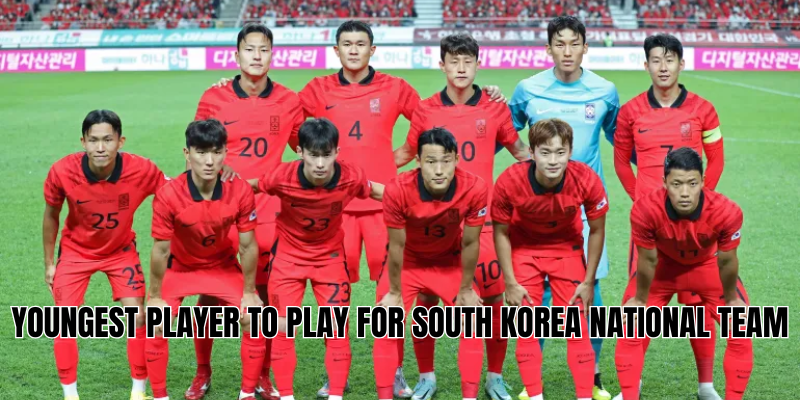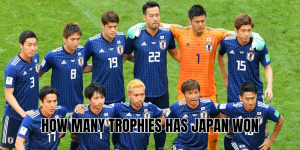The question — youngest player to play for South Korea national team — is more than trivia. It’s a testament to talent, timing, and the boldness of a coach willing to gamble on youth. In this article, AnaGoal will explore the trailblazers, the records, and the fascinating stories behind those who first donned the Taegeuk badge at an age when most are still dreaming.
A Look Into The Record Books
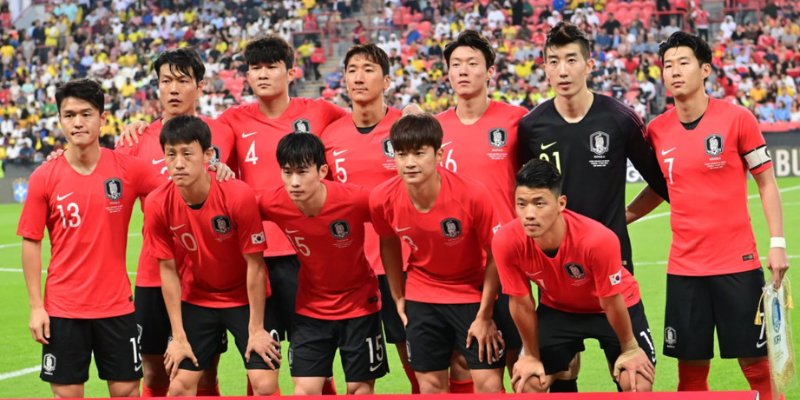
When we ask “who is the youngest player to play for South Korea national team,” context matters. Are we speaking of the men’s team, the women’s team, or across both? Are we referring to World Cup matches or any international fixture? Let’s break this down.
- In the history of the men’s South Korean national team, the record is held by Kim Pan-keun, who made his senior debut at approximately 17 years and 241 (or 242) days old, competing in an international match in 1983.
- On the women’s side, Casey Phair broke into the South Korea senior team at 16 years and 26 days old when she appeared at the 2023 FIFA Women’s World Cup — although that is specific to a World Cup match.
- If we count all senior matches (friendlies, qualifiers, tournaments), Casey Phair’s mark stands as one of the youngest for South Korea at the senior level, regardless of gender.
Thus, strict to men’s senior national team, the youngest is Kim Pan-keun at 17 years and ~241 days. Across both genders, Casey Phair now challenges that.
Kim Pan-keun: The Teenage Defender Who Stepped Up Early
Early life and rise
Born on 5 March 1966, Kim Pan-keun emerged through youth football circuits and drew early attention. His performances at youth international tournaments led to a senior team call-up in 1983, making him one of the youngest ever to wear the Taegeuk at senior level.
The record-setting debut
At age 17 years and 241 days, Kim played his first match for the South Korea men’s national team, becoming the youngest male player ever to earn senior international caps for South Korea. His debut in such a context symbolized confidence.
Career highlights & legacy
Kim went on to earn 51 caps and scored 3 goals for his country, participating in major tournaments like the 1994 FIFA World Cup and the 1996 AFC Asian Cup. He was also a versatile full-back known for his stamina, defensive discipline, and technical ability. Over time, his early record has been a benchmark for younger talents.
Casey Phair: Making History in Women’s World Cups
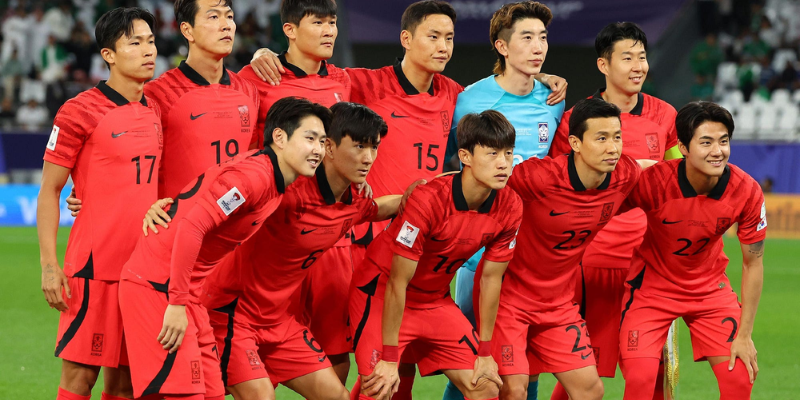
A youthful storm
Casey Phair, born 29 June 2007, took the world stage by storm during the 2023 FIFA Women’s World Cup. When she entered as a substitute against Colombia, she became the youngest-ever player to appear in any FIFA World Cup (men’s or women’s) at 16 years and 26 days, tipping the record previously held by a player.
A South Korea milestone
Not only did Phair make history globally, she also made history for South Korea:
- She became the first multiracial (Korean-American) player to represent the South Korea women’s senior team.
- She achieved one of the youngest senior caps in Korea’s history.
- In a later match against Thailand, she scored a hat-trick at 16 years and 119 days, becoming the youngest person to score a hat-trick in any South Korean national team level.
Club career trajectory
Phair signed with Angel City FC in 2024, becoming among the youngest players in their history. Her time includes being loaned to European clubs to develop experience and staying active in youth and senior international fixtures.
Comparison: Men’s vs Women’s Records
| Category | Player | Age at Debut | Notes |
| Men’s senior team | Kim Pan-keun | ~17y 241–242d | Earliest known male debut for South Korea senior side |
| Women’s world stage | Casey Phair | 16y 26d | Youngest in any FIFA World Cup, across genders |
| Women’s senior team (overall) | Casey Phair | 16y 26d | Among the youngest senior caps for South Korea overall |
| Youngest scorer (South Korea) | Casey Phair | 16y 119d | Youngest to score a hat-trick; second-youngest scorer overall |
Why These Records Matter
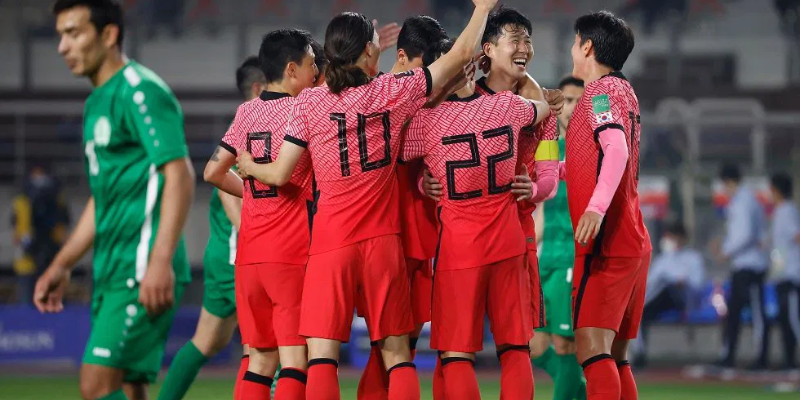
A window into youth development
When a 16- or 17-year-old is trusted with a senior national team cap, it speaks volumes about the youth development structure in place. For South Korea, those records hint at a willingness to promote genuine talent when merit demands.
Pressure, expectation, and potential
Being the youngest means every performance is scrutinized. Yet both Kim and Phair carried that weight early. Their success or struggles become case studies for how a system embraces or consumes young prodigies.
Inspiration for the next generation
Records like these are not static; they inspire future talents to push older boundaries. The fact that Casey Phair broke a cross-gender World Cup record sends a message that young players should aim high, regardless of past norms.
Challenges And Caveats In Declaring “Youngest”
- Documentation limitations: Older matches may not have perfect archival records; some earlier undocumented teenage appearances could exist.
- Definition of “play”: Does it mean a World Cup match, friendly, qualifier, or full 90 minutes? Many records depend on “at least a minute played in a senior international fixture.”
- Gender distinctions: Historically, men’s records have more attention. Women’s international history is sometimes recorded separately, complicating cross-gender comparisons.
- Dual nationals and eligibility: Mixed-heritage players like Phair sometimes choose between federations. Their cap counts only apply once they commit.
Beyond Debut: What Came After
Kim Pan-keun
Kim matured into a dependable international, contributing across more than a decade. His early start gave him longevity; he played in both club and country at top levels, reinforcing that early trust can pay off.
Casey Phair
Phair’s journey is still unfolding. She continues to earn caps, score, and develops her club career across U.S. and European leagues. Her record-breaking debut is becoming one landmark in a story many hope grows further.
Upcoming prospects
South Korea’s talent pipeline continues to produce teenage stars. With modern scouting, youth programs, and international exposure, we may someday see even younger faces stepping into the national team spotlight.
Final Thoughts
The title youngest player to play for South Korea national team is a layered one. In men’s history, Kim Pan-keun remains the standard-bearer with his debut at 17 years and ~241 days. Yet in recent times, Casey Phair has challenged how we view that benchmark, breaking global records and youth ceilings from the women’s side.
The very concept of “youngest” is more than a record — it’s a challenge to systems, a moment of trust, and a spark of possibility. As youth development evolves and boundary-pushing becomes more common, AnaGoal invites you to keep watching. Who will be the next teenager to walk onto the field and etch themselves into Korea’s footballing lore?
If you enjoyed this exploration of records and rising stars, stay tuned on AnaGoal for dee
